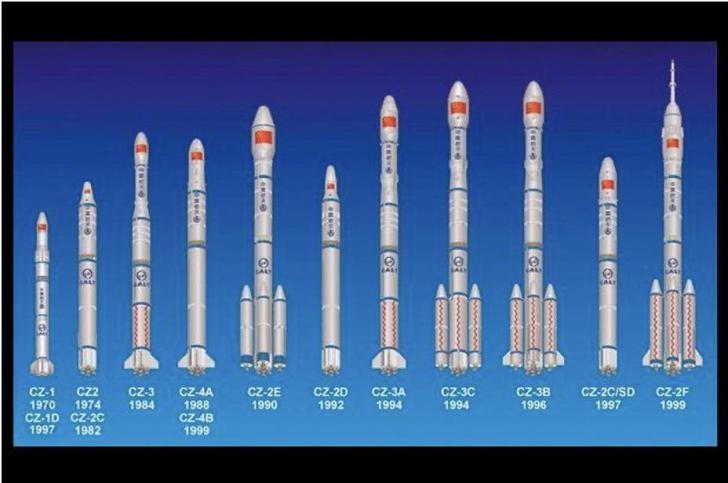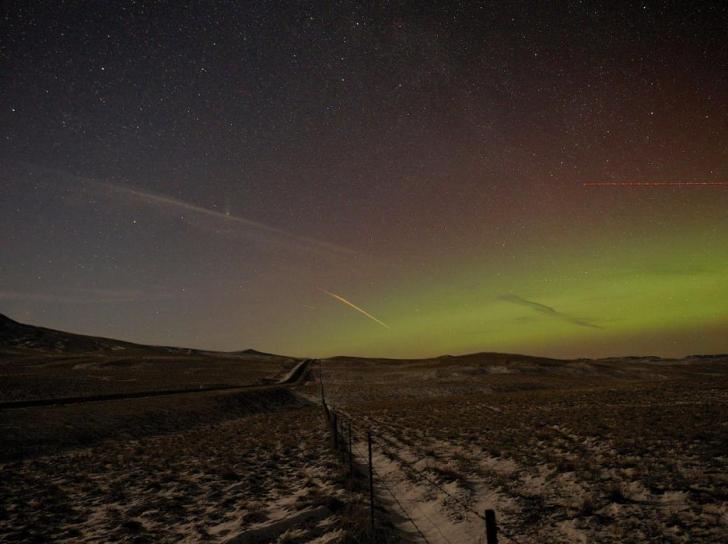Technology / Other
What Happened with Debris from Chinese Rocket Booster Falling Back to Earth?
04 Jul 2023 at 11:17hrs |
95 Views

China faced a lot of criticism because it allowed more than one rocket booster to fall to Earth uncontrollably. Even NASA accused space operators in Berlin of not meeting responsible standards on space debris after some parts from a Chinese rocket booster fell into the Indian Ocean. Tiangong-1, the first space station in China, ended up in the Pacific Ocean back in 2016, right after Beijing confirmed that it had lost control. And then, in May 2020, an 18-tonne rocket booster once again fell uncontrollably. China faced criticism after it was said that debris from the Chinese rocket endangered other satellites.
China has experienced problems with uncontrolled rocket boosters four times so far. Europe and the US adhere to the rule that space debris disposed over our planet shouldn't exceed one-in-10,000 chance that a ground injury is caused. China was also criticized after it used a missile to destroy a defunct weather satellite back in 2007. This created a debris field, and many governments said it could jeopardize other satellites. Besides, space debris is also dangerous because it can make it more challenging for other rockets to reach their orbital destinations.
Where did the debris from the Chinese rocket fall?
Rocket parts from a Chinese booster fell exactly where the Philippine Space Agency predicted. According to this agency, experts examined suspected debris' pictures. Most of the rocket booster's remnants burnt up at re-entry, whereas the remaining pieces landed in an area with 101.9 degrees West and 9.9 degrees North coordinates. China's space agency gave information about its launch vehicle re-entry coordinates at longitude 119 degrees East and latitude 9.1 degrees North. This is a Sulu Sea area east of the Philippines in the North Pacific. However, this debris might also have fallen in Central South America, the US, India, China, Africa, Australia, and Southeast Asia, says the Aerospace Corporation, which is a US non-profit research centre funded by the government and based in California.

According to Orbital Today, remnants from a Chinese rocket booster will be discovered at the given coordinates to determine this accident's cause. Chinese foreign ministry spokesman Zhao Lijian mentioned that regardless of where debris from a rocket stage has fallen, this booster most likely didn't cause any damage to people, aviation, or ground property. He believes that most components of a Chinese rocket booster have been destroyed upon re-entry. NASA and other space agencies accused China of not revealing enough about this rocket booster after the Beijing government remained silent regarding booster debris trajectory. A few hours after Zhao made his speech, the China Manned Space Agency (CMSA) decided to give this rocket booster's approximate position. It mentioned that it was in an elliptical orbit, 263.2 km high at the farthest point. Its nearest point was 176.6 km high.
What happened to the Chinese rocket that was falling to Earth?
Now that you know where the Chinese rocket booster (or rather several boosters) landed, what are Chinese officials saying about what happened to it? A big chunk of this massive Chinese rocket booster triggered the partial closure of Spain's airspace. Simply put, many flights were delayed at the time. Rocket booster broke upon re-entry into our planet's atmosphere over the South-Central side of the Pacific Ocean. This happened at 10.01 UTC, the US, and European space authorities are saying. According to the EU Space Surveillance and Tracking (EUSST) centres of operation, this rocket's booster stage was around 30 m long, weighing 17-23 tons. EUSST monitored how this booster fragment returned to Earth. This particular Chinese rocket booster was amongst the largest debris pieces that re-entered the Earth's atmosphere lately, which is exactly what caused such concern in the space industry international community.
The flight discussed in this article was China's fourth flight in the Long March 5B since May 2020 maiden launch. When the first deployment took place, fragments of a rocket have landed on the Ivory Coast. Here, they have damaged a few buildings in Western Africa, but luckily no injuries have been reported. The second flight's debris landed without doing any harm, whereas the third flight's remnants fell back uncontrollably. Zhao Lijian called the rocket's re-entry a common international space practice. He mentioned that Chinese rockets use special technology, and most of their components are so small that they burn down on the descent. Therefore, it's very unlikely that there has been any damage caused to ground and aviation facilities.
While so far China has managed to avoid casualties and damage, a falling rocket booster, especially if it is falling uncontrollably, is still a high hazard. Ideally, measures should be taken to ensure that falling boosters splash down in the ocean or over uninhabited areas— something the world community should pay more attention to.
China has experienced problems with uncontrolled rocket boosters four times so far. Europe and the US adhere to the rule that space debris disposed over our planet shouldn't exceed one-in-10,000 chance that a ground injury is caused. China was also criticized after it used a missile to destroy a defunct weather satellite back in 2007. This created a debris field, and many governments said it could jeopardize other satellites. Besides, space debris is also dangerous because it can make it more challenging for other rockets to reach their orbital destinations.
Where did the debris from the Chinese rocket fall?
Rocket parts from a Chinese booster fell exactly where the Philippine Space Agency predicted. According to this agency, experts examined suspected debris' pictures. Most of the rocket booster's remnants burnt up at re-entry, whereas the remaining pieces landed in an area with 101.9 degrees West and 9.9 degrees North coordinates. China's space agency gave information about its launch vehicle re-entry coordinates at longitude 119 degrees East and latitude 9.1 degrees North. This is a Sulu Sea area east of the Philippines in the North Pacific. However, this debris might also have fallen in Central South America, the US, India, China, Africa, Australia, and Southeast Asia, says the Aerospace Corporation, which is a US non-profit research centre funded by the government and based in California.

What happened to the Chinese rocket that was falling to Earth?
Now that you know where the Chinese rocket booster (or rather several boosters) landed, what are Chinese officials saying about what happened to it? A big chunk of this massive Chinese rocket booster triggered the partial closure of Spain's airspace. Simply put, many flights were delayed at the time. Rocket booster broke upon re-entry into our planet's atmosphere over the South-Central side of the Pacific Ocean. This happened at 10.01 UTC, the US, and European space authorities are saying. According to the EU Space Surveillance and Tracking (EUSST) centres of operation, this rocket's booster stage was around 30 m long, weighing 17-23 tons. EUSST monitored how this booster fragment returned to Earth. This particular Chinese rocket booster was amongst the largest debris pieces that re-entered the Earth's atmosphere lately, which is exactly what caused such concern in the space industry international community.
The flight discussed in this article was China's fourth flight in the Long March 5B since May 2020 maiden launch. When the first deployment took place, fragments of a rocket have landed on the Ivory Coast. Here, they have damaged a few buildings in Western Africa, but luckily no injuries have been reported. The second flight's debris landed without doing any harm, whereas the third flight's remnants fell back uncontrollably. Zhao Lijian called the rocket's re-entry a common international space practice. He mentioned that Chinese rockets use special technology, and most of their components are so small that they burn down on the descent. Therefore, it's very unlikely that there has been any damage caused to ground and aviation facilities.
While so far China has managed to avoid casualties and damage, a falling rocket booster, especially if it is falling uncontrollably, is still a high hazard. Ideally, measures should be taken to ensure that falling boosters splash down in the ocean or over uninhabited areas— something the world community should pay more attention to.
Source - Byo24News
Join the discussion
Loading comments…































